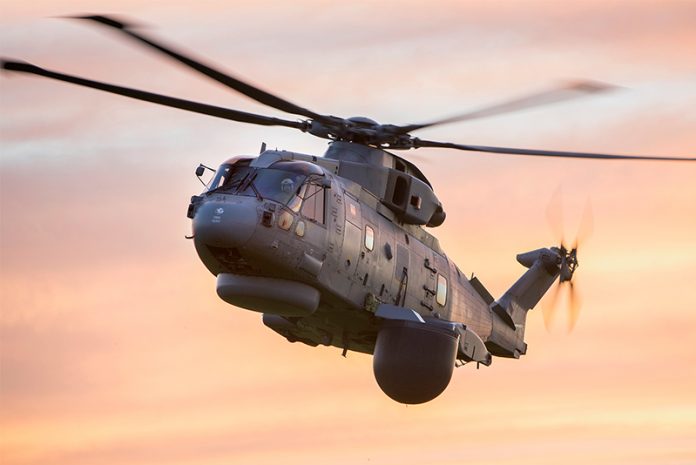A 24 June report from the UK National Audit Office (NAO) confirmed that the Royal Navy’s new Crowsnest radar system is 18 months late, which will affect Carrier Strike’s capabilities in its first two years.
Crowsnest Radar System
Crowsnest provides critical radar protection for Carrier Strike. It is to be fitted to the Royal Navy’s Leonardo AW1010 Merlin helicopters to provide long-range air, sea and land surveillance, detection and tracking to identify threats beyond the horizon.
In November 2016, the UK MoD agreed a $428 million (£339 million) fixed-price contract with Lockheed Martin for the Crowsnest system. Thales and Leonardo Helicopters were sub-contracted to deliver the project.
In January 2019, the MoD identified that Thales had not provided sufficient information on the project’s delays to Lockheed Martin. Consequently, neither identified the lack of progress until it was too late to meet its initial operating capability (IOC) milestone.
First Radar Flight Trial
In February 2020, Lockheed Martin confirmed that the first radar flight trial took place six weeks later than planned. The helicopter needed for trials, which was the responsibility of Leonardo Helicopters, had received insufficient care during outdoor storage, leaving it unsuitable for flying. The Royal Navy reassigned Merlin helicopters to support the flight trials but, in doing so, reduced its fleet availability.
The Crowsnest airborne radar system will provide a crucial element of protection for a carrier strike group, but the initial contracted capability will not be available until September 2021, 18 months later than planned.
Target Delivery Date
The MoD did not oversee its contract with Lockheed Martin effectively and, despite earlier problems on the project, neither was aware of the sub-contractor’s lack of progress until it was too late to meet the target delivery date. It subsequently concluded that Thales, failed to meet its contractual commitments to develop the equipment and had not provided sufficient information on the project’s progress.
However, further delays mean that it does not expect to have full airborne radar capability, originally set for June 2022, until May 2023.
by David Oliver














